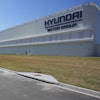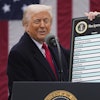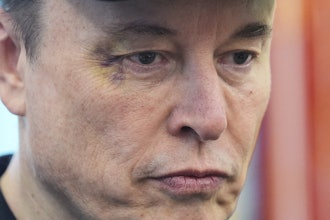|
In his 35 years in manufacturing, Mike Collins has helped companies make the transition from being defenders—focused on process change and cost-cutting—to prospectors—focused on finding new markets and profitable growth. |
Outsourcing: The Good
Eastman Machine Co. of Buffalo, NY, had to face this decision in 2001 because Chinese competitors had copied their machines. According to Eastman CEO, Robert Stevenson, “up until 2001, we were nearly vertically integrated; we manufactured most of our products right here in our Buffalo factory. We brought in the forging, and the raw material; we cut the metal, stamped the parts, formed parts, and assembled them into finished products.”
Because of price pressures, however, Eastman decided that to increase its retained earnings and improve its profit margins, it simply had to subcontract some functions to lower cost countries. “At that point, we put in a plan to outsource most of our metal cutting operations or machine shop operations.”
Some SMMs are establishing foreign suppliers because their customers are comparing their costs to the unit costs of overseas suppliers, and suggesting that the suppliers outsource. Some are even getting ultimatums from customers.
Wayne Youngers, Youngers & Sons Manufacturing, is one of those people who had no choice. Younger’s customer told him his small $6.00 shaft used in hydraulic machines could be bought in China for $2.00 or less, and at a comparable quality. Mr. Youngers is now reviewing his entire product line to see which items can be made in China. He figures at least 50 percent of them can be produced overseas.
Outsourcing: The Bad & The Ugly
As well as this has worked out for Eastman, and Youngers & Sons, many other manufacturers have found that there are hidden costs and risks associated with outsourcing to foreign suppliers.
A report from the New York-based Conference Board suggests that outsourcing is not living up to its expectations. The report says, “an estimated half of all outsourcing operations (are) destined to fall short of expectations,” and goes on to describe the branding, regulatory, social, geopolitical, human capital and legal risks that companies may not anticipate, and how they can “turn a once attractive potential savings into a costly endeavor.”
Intellectual property is a big issue when dealing with China and in the Asian Pacific region in general. Copying, reverse engineering and even counterfeiting products is not an unusual business practice in these countries. It is now obvious to most U.S. companies that the Asian view of business ethics is much different than the U.S. view of business ethics. Even a signed contract may be no protection. There are many variations of this theme.
Columbia Machine Concrete Products Division of Vancouver, WA, had been manufacturing and installing complete concrete block plants for China for many years. In less than five years from the first installation, they found that many of their most popular machine models had been copied and manufactured by local Chinese operations. In many instances these local manufacturers sold copies of the machines at a third of the American prices.
Hayward Pool Products of Elizabeth, NJ markets their line of heaters, pumps and other swimming pool equipment all over the world. They inadvertently found that a Chinese firm had copied some of their products right down to their logo and part numbers. The Chinese firm were then trying to sell the counterfeit products to an existing Hayward customer at a 25 percent discount. “That jeopardized more than $20 million in sales to this one customer,” says Paul Aderberg, Hayward VP of Technology.
The Checklist
Many manufacturers rush overseas because of the proposed low unit prices. But they don’t do a good job of trying to determine total cost and the risk factors. Here is a brief checklist to help you through a basic analysis. At a minimum, answer these questions before signing any type of outsourcing agreement with a foreign supplier.
- Freight: Do you have a reasonable quote for landed costs of your components, and a port near your plant?
- Expediting: Does this include the cost of expediting and/or air freight charges if the supplier can’t make the ship date?
- Logistics: This can include the costs of crate forwarders, consolidators, customs, regulatory agencies, carriers, ports, and more. Are all of these costs covered in the freight costs?
- Duties, Fees, and Taxes: This is a moving target because countries like China reserve the right to change or add duties, fees and taxes at any time. Have you discussed who will pay the unknown future duties, fees and taxes with the supplier?
- Inventory: Many manufacturers decide that they must have an inventory of “safety stock” to ensure uninterrupted supply. Have you evaluated the costs of labor, warehousing, taxes etc.?
- Delivery: Have you considered the costs of lost sales due to “stock-outs” or unreliable delivery?
- Cost of Quality: This can include customer scrap or yield rate, rework, warranty claims, costs of debugging or costs of finding defective product in a long pipeline. Will your agreement define who will absorb these costs?
- Intellectual Property: Do you have a plan to protect your intellectual property and trade secrets?
- Legal Counsel: Have you located a law firm in the target country who can help you with disputes?
- Project Management: Have you anticipated the investment costs in people and systems necessary to manage an overseas project?
- Training: Can you estimate the costs of training for the first two years of operation?
- Warranty: Have you specified the responsibility for warranty and service, as well as any warranty limitations?


















